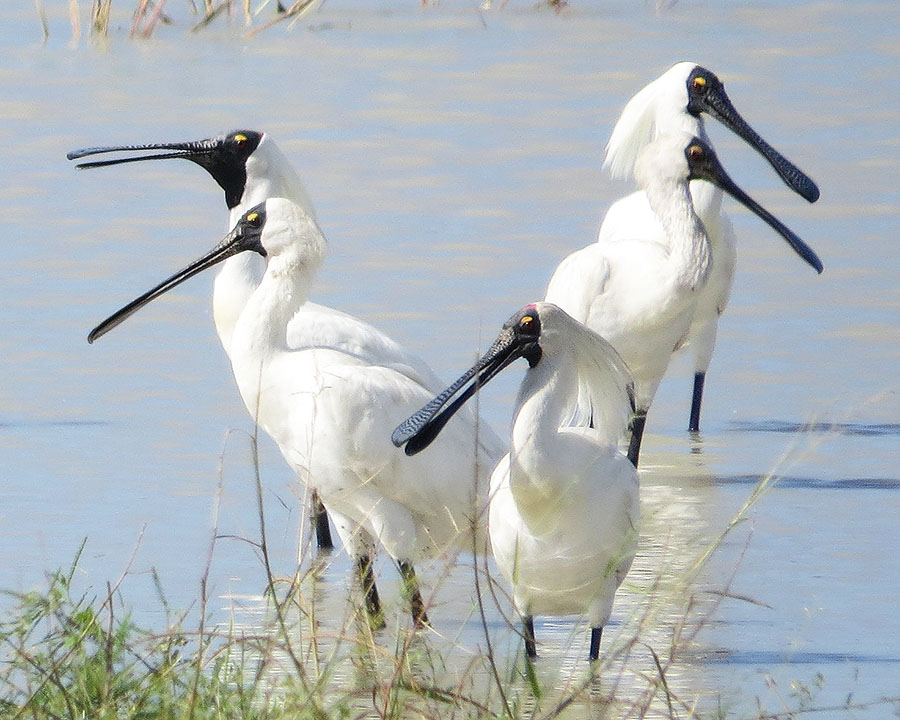|
|
Aggregation (management)Large aggregations of waterbirds in wetlands often present the quintessential images of this habitat. Wetlands have been identified as meeting criteria for international importance based on aggregations of waterbirds. These sites are often a high priority in conservation planning and site management activities. Related links Wetlands are often managed to support waterbird aggregations for mixed species or for a particular species to maintain thresholds set for defining their relative importance (e.g. Ramsar criteria 5). In Australia, numbers of waterbirds naturally fluctuate, often quite markedly. Therefore, the determination of natural variation in numbers is critical for management, although often difficult to achieve in short time frame. To gain a comprehensive understanding of waterbird numbers, surveys should account for the full range of wetland conditions and climatic fluctuations and it may take up to 30 years to establish a baseline. These survey requirements need to be balanced with competing resources and risk constraints. Occurrence of large aggregations of waterbirds at a wetland site can be an asset for site managers especially in terms of supporting eco-tourism. Strategies to minimise or avoid disturbance such as the use of fixed bird hides and other methods of concealing people can be very effective. There are some potentially negative aspects of waterbird aggregations which may require a management response. Flocks of magpie geese and cranes can damage crops; ducks camping at farm dams can foul the water; and colonial nesting waterbirds can foul nesting trees with their droppings, leading to offensive odours and dieback or tree deaths. In most cases the effects are short-lived and of minor consequence but sometimes action may be needed, such as deterrence of birds or provision of alternate feeding habitat. As waterbirds are protected by law, advice should be sought. Last updated: 3 July 2015 This page should be cited as: Department of Environment, Science and Innovation, Queensland (2015) Aggregation (management), WetlandInfo website, accessed 8 May 2025. Available at: https://wetlandinfo.des.qld.gov.au/wetlands/management/bird-management/other-waterbirds/aggregation.html |

 — Department of the Environment, Tourism, Science and Innovation
— Department of the Environment, Tourism, Science and Innovation


